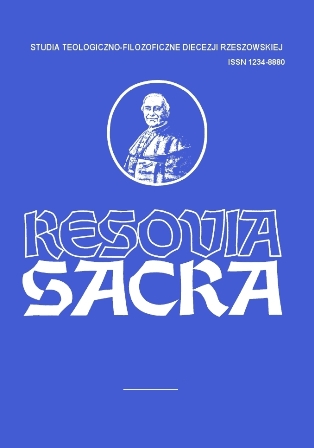GENEZA I ZNACZENIE CEREMONII „ŚWIĘTEGO OGNIA” W BAZYLICE BOŻEGO GROBU NA PODSTAWIE ŹRÓDEŁ LITURGII JEROZOLIMSKIEJ DO XIII WIEKU
THE ORIGINS AND MEANING OF “THE HOLY FIRE” CEREMONY IN BASILICA OF THE HOLY SEPULCHRE ACCORDING TO THE SOURCES OF THE JERUSALEM LITURGY BEFORE 13TH CENTURY
Author(s): Tomasz BaćSubject(s): Christian Theology and Religion, History of Church(es), Theology and Religion, Eastern Orthodoxy
Published by: Instytut Teologiczno-Pastoralny im. św. Józefa Sebastiana Pelczara w Rzeszowie
Keywords: Jerusalem; Anastasis; Holy Sepulcher; Holy Fire; Paschal Vigil; Egeria; Lucernarium; the blessing of the fire; Eastern Liturgies; Latin Liturgy
Summary/Abstract: The Holy Fire ceremony, also known as the Holy Fire miracle, is one of the most eminent liturgies of the Greek Orthodox Church in Jerusalem, celebrated every year on Holy Saturday early afternoon. The origins of this celebration can be found in the most ancient sources of the Jerusalem liturgy stemming from the Byzantine, Armenian, Georgian and Latin traditions. All the sources unanimously prove that the rites associated with the Holy Fire arose from the evolution of the opening rites of the Paschal Vigil celebrated inside the chapel of the Tomb of Christ in Jerusalem. The popular piety of the Jerusalem Christians considered them as supernatural and miraculous already several centuries before the Crusaders came to the Holy Land. The Orthodox Church (particularly of Greek and Russian traditions) maintains this interpretation to nowadays.
Journal: Resovia Sacra. Studia Teologiczno-Filozoficzne Diecezji Rzeszowskiej
- Issue Year: 2014
- Issue No: 21
- Page Range: 33-57
- Page Count: 25
- Language: Polish

